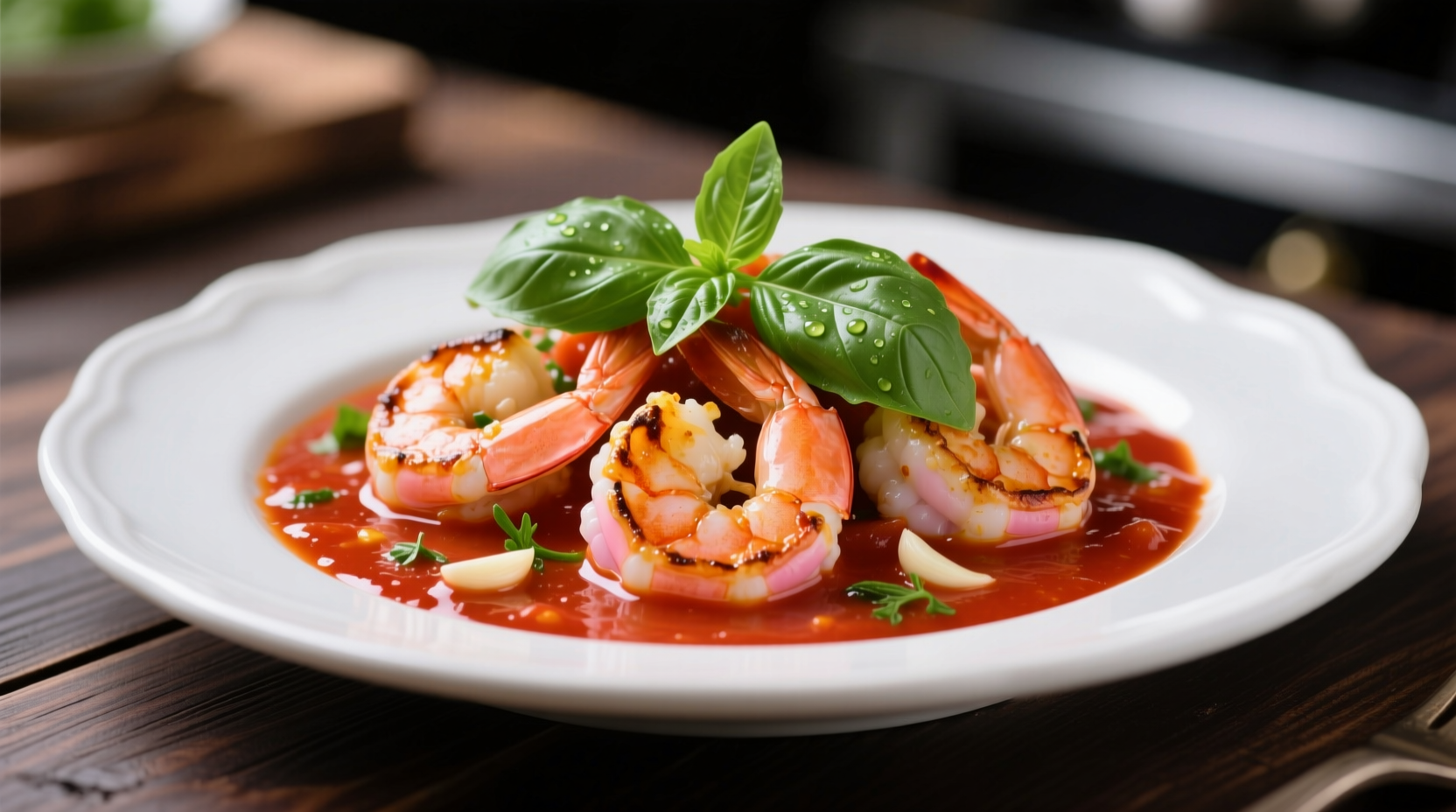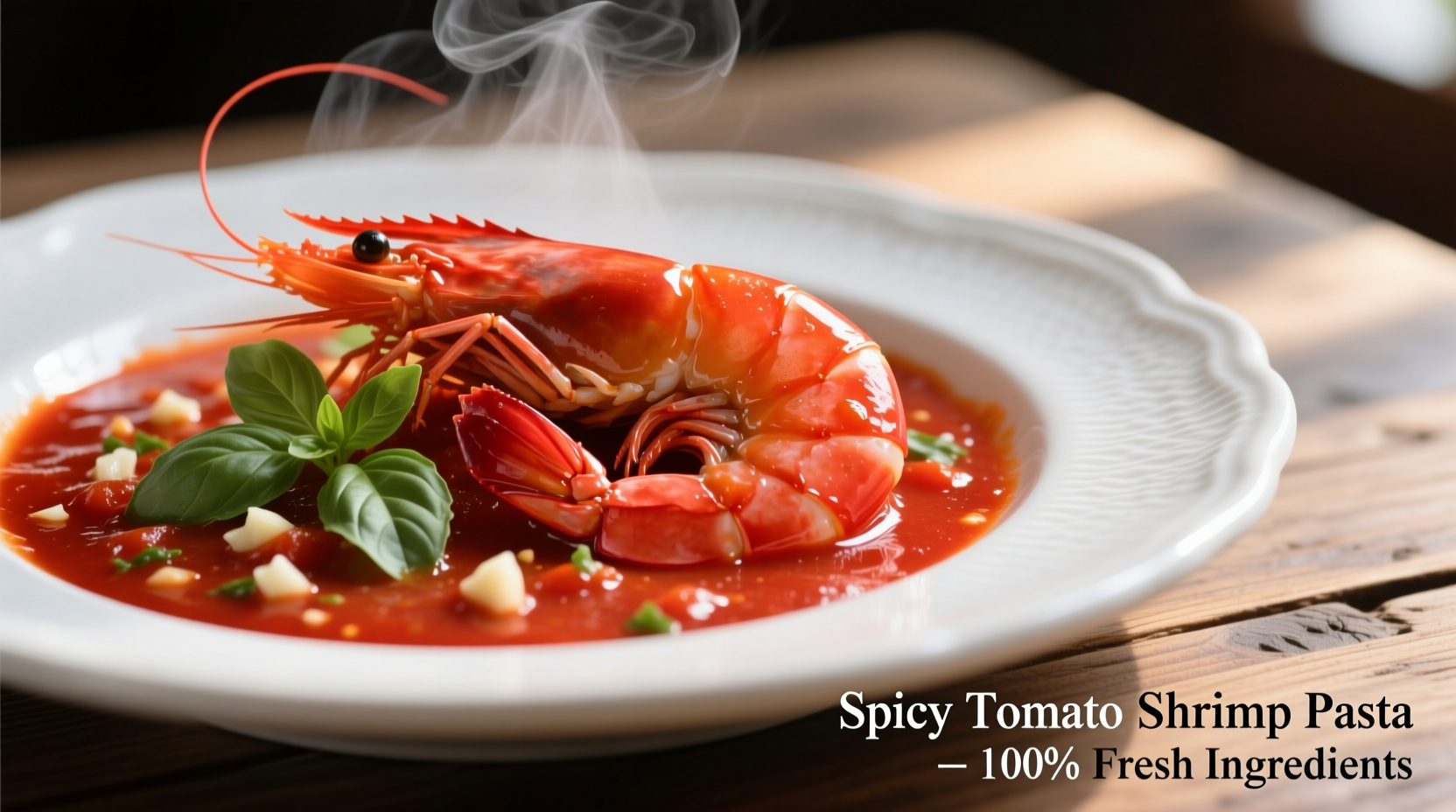Why This Dish Deserves a Permanent Spot in Your Recipe Collection
Shrimp in tomato sauce delivers restaurant-quality flavor with minimal effort—ready in under 30 minutes using pantry staples. This versatile dish adapts seamlessly to Mediterranean, Spanish, or Latin American flavor profiles while providing 20g of protein per serving. Our guide reveals professional techniques to prevent rubbery shrimp and build layered tomato flavors that most home cooks miss.
Your Essential Ingredient Checklist
Quality ingredients make the difference between good and exceptional shrimp in tomato sauce. Skip these common shortcuts:
- Shrimp: Use 16/20 count (16-20 per pound) wild-caught shrimp with shells on for maximum flavor. The FDA recommends cooking shrimp to 145°F internal temperature for safety.
- Tomatoes: San Marzano DOP-certified canned tomatoes provide balanced sweetness and acidity. Avoid 'tomato product' blends with added calcium chloride.
- Aromatics: Fresh garlic (not pre-minced) and yellow onion create the flavor foundation. Reserve shrimp shells to simmer in your sauce for 10 minutes—this adds depth without fishiness.
Step-by-Step Cooking Process
Follow this chef-tested sequence for perfect results every time:
Prep Phase (5 minutes)
- Peel shrimp, leaving tails intact. Save shells for stock.
- Mince 3 garlic cloves and 1 small yellow onion.
- Measure 28oz San Marzano tomatoes, 2 tbsp olive oil, 1 tsp red pepper flakes.
Cooking Phase (15 minutes)
- Sauté aromatics in olive oil over medium heat until translucent (3-4 minutes).
- Add tomatoes, shrimp shells, and red pepper flakes. Simmer 10 minutes.
- Strain sauce, discarding solids. Return sauce to pan.
- Cook shrimp 2-3 minutes per side in the sauce until opaque.
Regional Variations Compared
| Region | Signature Ingredients | Cooking Technique | Best Served With |
|---|---|---|---|
| Mediterranean | Lemon zest, oregano, Kalamata olives | Shrimp added at end for delicate texture | Crusty bread, Greek salad |
| Spanish (Gambas en Salpicón) | Sherry vinegar, smoked paprika, bell peppers | Tomato base cooked 20+ minutes for depth | Paella rice, roasted peppers |
| Latin American | Epazote, culantro, plantain chips | Shrimp marinated in citrus before cooking | White rice, black beans |
This comparison reflects research from the Encyclopedia Britannica's seafood cooking history showing how tomato-based seafood preparations evolved after tomatoes arrived in Europe from the Americas.
Avoid These 3 Costly Mistakes
- Overcooking shrimp: Remove shrimp from heat at 140°F—they'll carryover cook to 145°F. The USDA Food Safety and Inspection Service confirms this prevents rubbery texture.
- Using low-quality tomatoes: Canned tomatoes with 'tomato puree' instead of whole peeled tomatoes contain additives that mute flavor.
- Adding shrimp too early: Delicate shrimp become tough when simmered with the sauce. Add during final 3-4 minutes only.
Perfect Pairings for Every Occasion
Match your preparation style with these serving suggestions:
- Casual weeknight dinner: Serve over zucchini noodles with extra olive oil drizzle
- Elegant dinner party: Spoon over saffron-infused risotto with micro basil garnish
- Authentic Spanish experience: Pair with crusty bread for dipping and a crisp Albariño wine
Storage and Reheating Guidelines
Store in airtight container for up to 3 days. When reheating:
- Warm sauce separately over low heat
- Add shrimp only during final 2 minutes
- Mist with lemon juice to refresh flavors
Freezing note: Shrimp texture deteriorates when frozen in sauce. Freeze sauce separately and add fresh shrimp when serving.
Nutritional Benefits Breakdown
A 1-cup serving provides:
- 22g high-quality protein (44% daily value)
- 1,000mg omega-3 fatty acids
- Rich in selenium (78% DV) and vitamin B12 (58% DV)
- Only 280 calories with 12g healthy fats
According to the USDA FoodData Central, shrimp's complete amino acid profile makes it one of the most bioavailable protein sources available.












 浙公网安备
33010002000092号
浙公网安备
33010002000092号 浙B2-20120091-4
浙B2-20120091-4